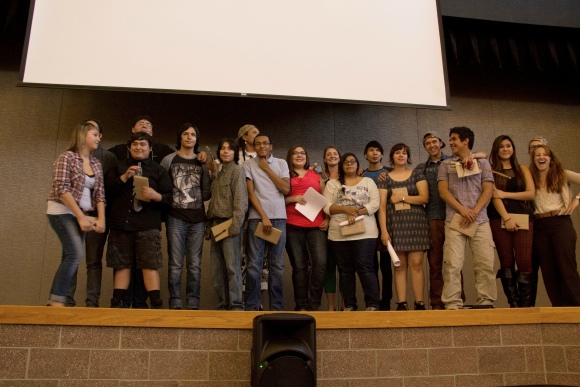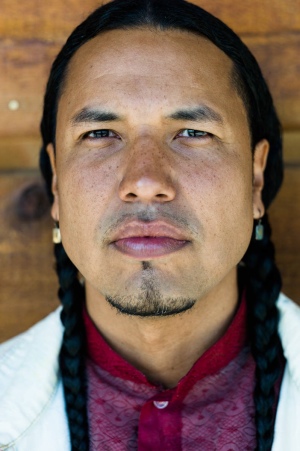A Lesson From the Miccosukee Tribe: Importance of Putting the 'Native' Back Into Native Education
“This language (English), which is good enough for a white man and a black man, ought to be good enough for the red man. It is also believed that teaching an Indian youth in his own barbarous dialect is a positive detriment to him. The first step to be taken toward civilization, toward teaching the Indians the mischief and folly of continuing in their barbarous practices, is to teach them the English language.”
—Annual Report of the
Commissioner of Indian Affairs
September 21, 1887
“It is a great mistake to think that the Indian is born an inevitable savage. He is born a blank, like all the rest of us. Left in the surroundings of savagery, he grows to possess a savage language, superstition, and life. We, left in the surroundings of civilization, grow to possess a civilized language, life, and purpose. Transfer the infant white to the savage surroundings, he will grow to possess a savage language, superstition, and habit.”
—Carlisle Indian School founder Colonel Richard Pratt, 1892
QUICK STORY: We recently completed an incredibly successful program on the Blackfeet Indian Reservation, for Browning High School (a public school) and initiated by a couple of progressive teachers and administrators. The program tapped into Blackfeet people’s long history of powerful orators and focused on public speaking with an emphasis on storytelling. This program touched on four values very profound and powerful for Blackfeet people (Amskapipikuni): storytelling, Blackfeet history, Blackfeet language and public speaking.
How do we know that it was “incredibly successful?” Simple. Because the students were engaged. A bunch of Blackfeet kids voluntarily choosing to present their stories, dance and poems to their community in a public setting in front of hundreds of people. Powerful Beautiful. Like their eloquent and practical ancestors.
They loved it.
Let’s be clear: NO ONE loves public speaking. According to Psychology Today, most people would rather DIE than speak publicly. Psychology Today says “We are afraid of being rejected from the social group, ostracized…We fear ostracism still so much today it seems, fearing it more than death, because not so long ago getting kicked out of the group probably really was a death sentence.”
But these beautiful Native students loved it. They were incredible at it. Owned the moment. Why?
Because the teachers showed them, from Blackfeet history, how they were born to do this. The teachers showed them how these gifts—language, storytelling, oratory—were literally in their blood. How their stories, their language are their strength and by mastering these gifts they were they doing their part to carry on a very proud and very ancient tradition.
Those kids got permission, from their own culture, to be great.

There was no “shy Indian kids” here. It was not perfect (for example, it is crucial that the district implement this program K-12—it’s hard to fit 12 years of practical application of Native history and language into one year), but it was undoubtedly great. These prodigious Native kids did something that NOBODY else, of any color or age, enjoys and they did it incredibly. Other Native kids will do the same when their studies are presented in this light.
WHY AM I TELLING YOU THIS? Well, because every single Native community desperately needs to follow the Miccosukee Tribe of Florida’s lead and take back control of educating their most precious resources—Native children.
See, the Miccosukee Tribe of Florida recently showed that they will not forsake tribal history, language or storytelling anymore in the name of national standards. The Tribe applied for (and received) a waiver from the Department of Interior and also Department of Education that recognizes the Tribe’s sovereign right to define what “Adequate Yearly Progress” is and, guess what? It will be better than what is required under federal law, the No Child Left Behind Act.
The No Child Left Behind Act, passed in 2001 by the numbskull George W. Bush, is a continuation of those same assimilative policy mentioned above because it generally doesn’t allow local communities to integrate local values into curriculum. That’s devastating for Tribal communities, where there actually are such a thing as “local values,” local languages and local histories.
There is no room to teach those powerful local narratives under No Child Left Behind, and as decent as President Obama has been in regards to Natives (and sometimes even “good”), he for some reason has not addressed this fundamental battleground.
We have to be able to determine what’s best for our kids. Native kids were stolen away forcibly with the intent to kill anything Native inside them—it is imperative that we make up for this fracturing of our families.

Yet, he still allows this assimilative model of education to be the norm for Native people. I submit that this model hurts Native kids. If taught correctly, Native students would achieve amazingly if Tribal schools were allowed to integrate things like language, Native history, storytelling and public speaking. Promise.
I know they would. I’ve seen it.
As the Annual Report of the Commissioner on Indian Affairs indicated, education is ground zero in the fight for tribal sovereignty. Always has been and still is. Why? Because if you cannot teach your children the values of the local community, those children are not going to be able to help or fit in with the local community. You build a community of strangers.
I’m proud of the Miccosukee Tribe of Florida for seeking (and getting!) an exemption from the US Department of the Interior’s and Department of Education’s assimilative practices in relationship to Indian people. That is sovereignty—Native people taking the time to define what “adequate yearly progress” is instead of letting some bureaucrats, of any color, in DC who have never even lived on a reservation define that for us.
We can learn a lesson from the Miccosukee Tribe’s powerful and revolutionary stance—they showed that it’s ok to believe in ourselves and exceed the national standards in our own way. The Indian way. The purpose of Indigenous education, presumably, is something different than simply teaching Native students exactly the same value systems, same language, same materialism and same consumer culture as the rest of America. That’s why our folks battled so hard to keep our kids local and why white politicians battled so strongly to subject us to the same standards as the rest of the country.
It’s for their right to retain the hallmarks of their tribal identities. AND…the punchline is that it WILL ALSO help them to perform better at objective reading, writing and ‘rithmatic standards that all students must achieve.
I know. I’ve seen it.
It’s a win/win; Native languages, history, public speaking, self-esteem AND high academic standards. We WILL do better for our own kids than anyone else can.

Blackfeet Nation/Suquamish Territories
NEW PROJECT "ISSKOOTSIK" (BEFORE HERE WAS HERE)
AUDIOBOOK AVAILABLE NOW at shop.krecs.com
Twitter: @BigIndian
© 1998 - 2015 Indian Country Today. All Rights Reserved To subscribe or visit go to: http://www.indiancountry.com Read more at http://indiancountrytodaymedianetwork.com/2015/06/10/lesson-miccosukee-tribe-importance-putting-native-back-native-education-160683